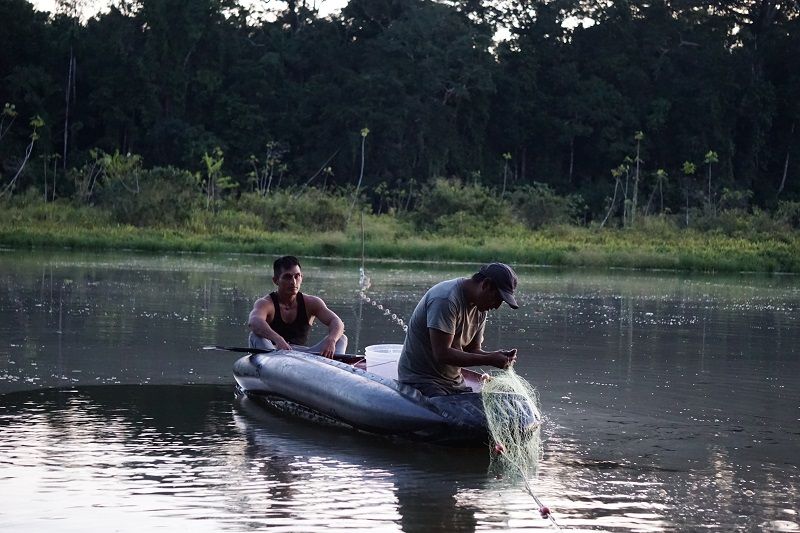Human activities can influence animals in different ways. Some animal species can adapt to new environments by changing their behavior. Others don’t show such flexibility and aren’t as successful at adapting. The type of human activity which animals are exposed to is one of the main factors determining their behavioral responses.
Tracking giant otters in Peru
Giant otters are visible, vocal carnivores living in tropical lakes and rivers. Their sheer size means they aren’t afraid to be seen or heard by humans. Giant otters’ social behaviour is relatively easy to watch, making them a common attraction for tourists in several South American countries, including Bolivia, Brazil and Peru. To make sure that the presence of groups of tourists isn’t harmful to giant otters, it’s important to understand whether consistent exposure to humans influences their behaviour.
This was one of the questions that members of the Peru giant otter conservation project, led by Adi Barocas, attempted to examine. They spent hours in the field, following giant otter groups from inflatable rubber boats, taking notes of their behavior. They specifically focused on behaviors that could be indicators of the well-being of the animals, such as successful fish captures and defensive behaviors (which may suggest the otters were feeling threatened).

Giant otters can become habituated to the presence of humans
Adi and his team found that otters in protected lakes frequently visited by ecotourists were tolerant of humans. These otters showed less defensive behaviour or periscoping compared with those in lakes not visited by humans. Periscoping describes the action of otters pulling themselves up high above the water level to appear larger.
Giant otter groups inside protected lakes were also more successful at capturing fish. This could be explained by reduced human activity in these lakes but is probably because outside protected areas, the quantities of fish are much lower.
In their recently published paper, the researchers conclude that giant otters exposed to ecotourism become habituated or used to the presence of humans, with high fish capture success and no visible adverse effects. Such findings can help the conservation of giant otters by providing information to local managing authorities so they can continue to monitor the activities of ecotourism operators.
Different activities, different behaviours
The researchers also studied giant otters in lakes where fishing and gold mining takes place, and the results were less encouraging. They found that giant otters exposed to such activities were more likely to avoid the presence of humans. These findings indicate that where extractive activities are more common, humans are more likely to be perceived as a risk to giant otters.

One of the important questions remaining is whether human activities have longer term effects on giant otters, for example on their numbers and ability to raise cubs. Adi and his giant otter team hope to answer this question by continuing to monitor groups inside and outside protected areas.
Thank you for helping us fund this research to protect giant otters in Peru.
If you’d like to support this work, please donate or set up a direct debit here today:
Find out more about our work to protect giant otters in Peru:
